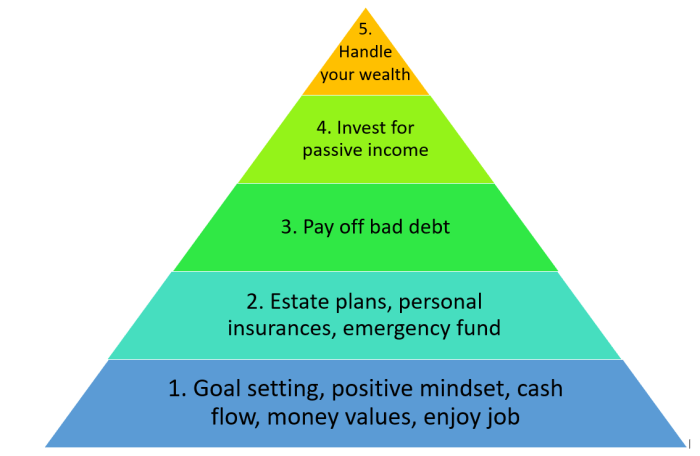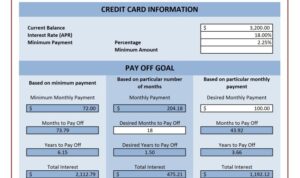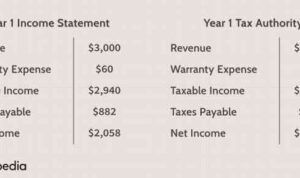Yo, check it! We’re diving into the world of financial freedom, where we break down the steps to help you secure that bag and live your best life. From setting goals to managing debt, get ready to level up your money game like a boss.
Now, let’s get into the nitty-gritty of what it takes to reach financial freedom and secure the bag for a future that’s ballin’!
Understanding Financial Freedom
Financial freedom is all about having the ability to make choices without being limited by financial constraints. For me, it means being able to pursue my passions, travel the world, and provide for my loved ones without worrying about money.
Positive Impact of Financial Freedom
- Having financial freedom can lead to reduced stress and anxiety, allowing for a happier and healthier lifestyle.
- It provides the opportunity to invest in personal growth, education, and experiences that enrich your life.
- Financial freedom enables you to support causes you care about and give back to your community.
Importance of Achieving Financial Freedom
Financial freedom is crucial for long-term stability as it allows you to build wealth, save for retirement, and handle unexpected expenses without going into debt.
- It provides a sense of security and peace of mind, knowing that you have a safety net for the future.
- Achieving financial freedom can lead to increased confidence and independence in making financial decisions.
- It opens up opportunities for personal and professional growth, as you are not limited by financial constraints.
Setting Financial Goals
Setting financial goals is crucial for achieving financial freedom. It involves creating a roadmap to guide your financial decisions and actions. By setting realistic financial goals, you can stay motivated, focused, and accountable for your financial success.
Process of Setting Realistic Financial Goals
- Reflect on your current financial situation: Take stock of your income, expenses, debts, and savings.
- Identify your financial priorities: Determine what matters most to you financially, whether it’s buying a house, saving for retirement, or paying off debt.
- Set specific goals: Define your goals clearly, making sure they are specific, measurable, achievable, relevant, and time-bound (SMART).
- Create a plan: Break down your goals into smaller, actionable steps and create a timeline for achieving them.
- Track your progress: Regularly review your goals and adjust your plan as needed to stay on track.
Examples of Short-term and Long-term Financial Goals
- Short-term financial goals:
- Build an emergency fund within the next 6 months.
- Pay off credit card debt within a year.
- Save for a vacation in the next 12 months.
- Long-term financial goals:
- Save for a down payment on a house in 5 years.
- Invest for retirement and reach a specific savings target in 20 years.
- Start a college fund for your child and contribute regularly for their education.
Importance of SMART Financial Goals
Setting SMART financial goals is essential because it provides clarity, focus, and accountability in your financial journey. By making your goals specific, measurable, achievable, relevant, and time-bound, you increase your chances of success and stay motivated to achieve them.
Budgeting and Saving
Budgeting and saving are crucial aspects of achieving financial freedom. By creating a budget to track your expenses and income, you gain a clear understanding of where your money is going and can identify areas where you can save more effectively.
Significance of Budgeting
Creating a budget allows you to allocate your funds wisely, ensuring that you have enough to cover your needs while also setting aside money for your wants and savings. It helps you prioritize your spending and avoid unnecessary expenses, ultimately helping you reach your financial goals faster.
Tips for Effective Saving
- Set specific savings goals to give yourself a target to work towards.
- Automate your savings by setting up automatic transfers to your savings account each month.
- Cut back on non-essential expenses like dining out or subscription services to free up more money for savings.
- Track your progress regularly to stay motivated and adjust your saving strategy as needed.
50/30/20 Rule for Budgeting
50% for Needs, 30% for Wants, 20% for Savings
The 50/30/20 rule is a popular budgeting method that suggests allocating 50% of your income towards essential needs like housing, utilities, and groceries, 30% towards discretionary wants like entertainment or dining out, and 20% towards savings and debt repayment. This balanced approach helps you maintain a healthy financial lifestyle while prioritizing your long-term financial security.
Managing Debt
When it comes to managing debt, it’s crucial to have a clear strategy in place to reduce and eventually eliminate it. By understanding the difference between good debt and bad debt, you can make informed decisions on how to prioritize your debt repayment.
Good Debt vs. Bad Debt
- Good debt typically refers to investments that have the potential to grow in value over time, such as student loans for education or a mortgage for a home.
- Bad debt, on the other hand, usually comes in the form of high-interest loans like credit card debt or payday loans that can quickly accumulate and become unmanageable.
It’s important to focus on paying off bad debt first before tackling good debt.
Prioritizing Debt Repayment
- Create a list of all your debts, including the total amount owed and the interest rates.
- Consider using the debt avalanche method by paying off the debt with the highest interest rate first while making minimum payments on the rest.
- Alternatively, you can use the debt snowball method by paying off the smallest debt first to build momentum and motivation.
- Avoid taking on new debt while you’re working on paying off existing debts to prevent further financial strain.
Investing for the Future

Investing is a crucial step in building wealth and securing your financial future. By putting your money into various investment options, you give it the opportunity to grow over time and provide you with additional income streams.
The Importance of Investing
Investing allows you to earn returns on your money that can outpace inflation and traditional savings accounts. It helps you build a diversified portfolio that can withstand market fluctuations and economic changes.
Different Investment Options
- Stocks: Buying shares of a company’s stock, which represents ownership in the company.
- Bonds: Investing in debt securities issued by governments or corporations, providing fixed interest payments.
- Mutual Funds: Pooling money with other investors to invest in a diversified portfolio of stocks, bonds, or other securities.
- Real Estate: Purchasing property with the intention of earning a return through rental income or property appreciation.
Tips to Start Investing
Even with small amounts, you can begin your investment journey:
- Start with what you can afford and gradually increase your investment contributions.
- Research and educate yourself on different investment options to make informed decisions.
- Consider using robo-advisors or investment apps to help you get started with minimal fees.
- Stay consistent with your investment strategy and avoid making emotional decisions based on market fluctuations.
Building Multiple Streams of Income
Building multiple streams of income is a key strategy to achieve financial freedom. By diversifying your sources of revenue, you can create a more stable financial foundation and increase your overall earning potential.
Passive Income Opportunities
- Investing in Rental Properties: Owning rental properties can provide you with a steady stream of passive income through rental payments. It’s a long-term investment that can generate consistent cash flow.
- Starting an Online Business: Launching an online business, such as an e-commerce store or a blog, can create passive income through advertising, affiliate marketing, or selling products/services. It allows you to earn money even when you’re not actively working.
- Investing in Dividend Stocks: Investing in dividend-paying stocks can generate passive income through regular dividend payments. It’s a way to earn money from your investments without having to sell the stock.
- Creating Digital Products: Developing and selling digital products like e-books, online courses, or software can generate passive income as you earn royalties or sales commissions whenever someone purchases your product.






